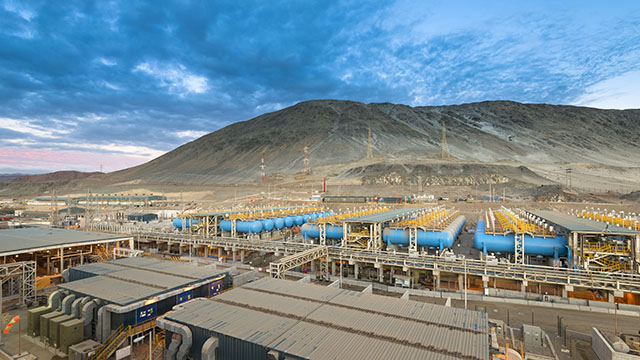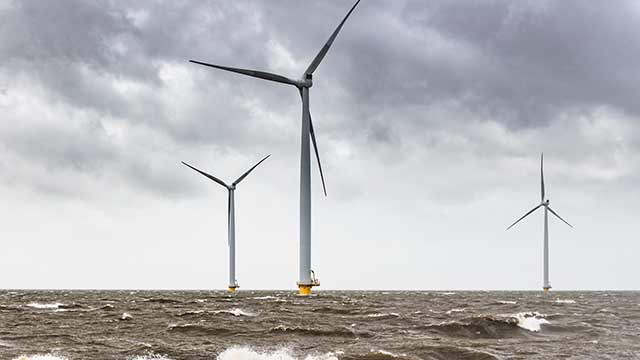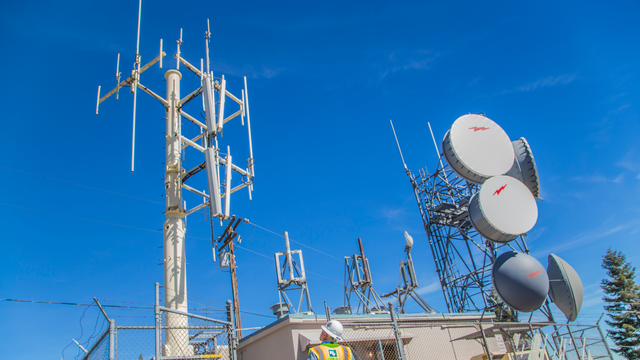By Harry Harji, Associate Vice President, Management Consulting, Black & Veatch Asia
Asia accounts for a quarter of global data centre investments. The region is expected to be the fastest growing data centre market during the next five years. India is Asia’s second fastest growing data centre market, behind China.
The market is driven by high current levels of demand for data centre services, coupled to significant growth forecast for the short and medium terms – fuelled by increasing volumes of data, the proliferation of smart devices, and digitalisation.
Another driver is localisation, or data sovereignty, laws. Many Asian countries mandate that government data should reside in data centres within their borders, requiring in-country data processing capabilities. Where this is not currently the case, localisation is likely in the short to medium term.
For developing markets like India, Indonesia - and to a lesser extent China - government initiatives to enable smarter, more connected communities, will also have a significant effect. In developing markets electrification will also be a stimulus, as the use of digital devices becomes more common. Singapore banking regulations are also driving a more sophisticated data centre market.
Resource Management Integral to Data Centre Operations
Uninterrupted service is at the heart of successful data centre services. To provide uninterrupted, reliable services data centres require uninterrupted, reliable sources of power. Data centres consume significant amounts of energy, which account for circa 40 percent of their operating costs.
Anders Andrae, Senior Expert - Life Cycle Assessment at Huawei, predicts that by 2025 data centres will account for 4.5 percent of the world’s energy consumption.
Renewable Energy Integration
Renewable energy can make a significant contribution to data centre operators’ energy needs. Google, one of the largest data centre operators, has achieved its goal of ensuring the company’s’ total purchase of energy from renewable sources exceeded the amount of electricity used. To achieve this Google buys renewable energy credits to offset its carbon footprint, the company does not actually build and use renewable resources for all of its data centres. Facebook, on the other hand, has fewer data centres and is primarily using renewable energy.
Using renewable energy is one way in which major corporations can demonstrate sound corporate stewardship. High renewable energy targets, however, can be especially challenging for data centre operators in Indonesia and India, where coal remains the primary baseload feedstock. In developing Asian markets with unreliable power supplies, investing in their own renewable energy resources and onsite generation – including microgrids - offers data centre operators greater energy reliability and independence.
Renewable energy sources alone, however, may not provide sufficient energy - or sufficiently consistent energy - to ensure a data centre’s uninterrupted and reliable operation.
Cooling Requirements
The largest energy requirement for a data centre is for cooling. To operate reliably, data centres require a stable temperature consistent with American Society of Heating, Refrigerating and Air Conditioning Engineers guidelines and/or original equipment manufacturer recommended operating temperatures. The high ambient temperatures and humidity in many Asian countries present a challenge to data centre operators, and may preclude the use of mechanical systems such as adiabatic cooling in favor of more traditional mechanical systems such as chilled water.
A reliable supply of high quality water is vital for data centre cooling systems. A reliable water supply, of predictable quality, is also vital indirectly; because water is a vital component of most baseload power generation. The water consumed directly at U.S. data centres, and the water used to generate the electricity that powers them, is expected to reach 660 billion litres by 2020.
Network Connectivity
High-speed, low latency network connections and the low cost to move big data is as important as reliable power and available land for the data centre owner/operator. Connection to undersea fiber optic cable systems is critical in a global digital economy.
In developed Asian markets, Singapore and parts of China for example, reliable power and water supplies – and good connectivity, are readily available. In developing Asian markets this is often not the case.
Choosing the right partner for your specific needs is central to the long-term success of all data centre development projects. To simplify the decision-making process, here the main factors to consider:
- At the nexus of optimum data centre performance is a reliable power source; a water supply of consistent quality and quantity; and fast, stable telecommunications connectivity. For investors, owners and operators to achieve speed to value, they should look for delivery partners with proven expertise in each of these individual disciplines and – perhaps most vitally – demonstrable expertise in their efficient integration.
- For leading-edge technology projects like data centres, Asia’s owners and operators, need to have confidence their delivery partners can combine world-class expertise, tailored to local needs, with regional delivery experience. Of the companies that meet this requirement, those specialising in critical infrastructure – power, water and telecommunications - will be the best schooled in safe, timely delivery and managing the risk of service interruptions.
- The surest way to a successful data centre solution is to select a partner who can identify and avoid common pitfalls, and maximize efficiency based on experience supporting the entire lifecycle of data centre assets. The most successful projects are those which can be built efficiently - without disruption to live sites for instance - and deliver optimal, predictable OPEX.
- With success dependent upon the integration of complex power, water and IT infrastructure there are significant benefits in choosing a technology agnostic advisor, rather than OEM, for data centre projects. This gives investors, owners and operators the freedom to access the technology, or technologies, best suited to their specific business needs.
- Providing the energy resilience data centres demand typically requires power from the grid to be supported by intermittent renewable energy sources, coupled with advanced energy storage and smart control; and sometimes power generated on-site using fossil fuels. As well as resilience such microgrid solutions can offer potential revenue streams as utilities often pay major users to reduce loads and peak times, and will buy surplus power generated or stored by a microgrid.
- Selecting the optimal site for a data centre is critical. Location choice is based on multiple criteria, including:
- Access to power, telecoms and water and potential symbiotic relationship between disparate industries, i.e. sharing common resources; importing recycled water; exporting heat.
- Tax incentives, regulatory requirements etc.
- Sufficient land for expansion
- Access to physical transport networks
- Access to sufficiently skill operational workforce
- Security: acceptable risk profile for natural hazards, criminal activity and political stability








